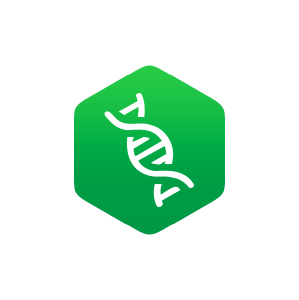Search
- https://bio.libretexts.org/Courses/Reedley_College/Biology_for_Science_Majors_I/07%3A_Cellular_Respiration/7.07%3A_Connections_of_Carbohydrate_Protein_and_Lipid_Metabolic_PathwaysAll of the catabolic pathways for carbohydrates, proteins, and lipids eventually connect into glycolysis and the citric acid cycle pathways (see Figure 7.6.2). Metabolic pathways should be thought of ...All of the catabolic pathways for carbohydrates, proteins, and lipids eventually connect into glycolysis and the citric acid cycle pathways (see Figure 7.6.2). Metabolic pathways should be thought of as porous—that is, substances enter from other pathways, and intermediates leave for other pathways. These pathways are not closed systems. Many of the substrates, intermediates, and products in a particular pathway are reactants in other pathways.
- https://bio.libretexts.org/Bookshelves/Introductory_and_General_Biology/Principles_of_Biology/01%3A_Chapter_1/09%3A_How_cells_obtain_energy/9.05%3A_Aerobic_Respiration_Part_1_-_GlycolysisBoth of these molecules will proceed through the second half of the pathway, and sufficient energy will be extracted to pay back the two ATP molecules used as an initial investment and produce a profi...Both of these molecules will proceed through the second half of the pathway, and sufficient energy will be extracted to pay back the two ATP molecules used as an initial investment and produce a profit for the cell of two additional ATP molecules and two even higher-energy NADH molecules (Figure \PageIndex3).
- https://bio.libretexts.org/Workbench/South_Texas_College_-_Biology_for_Non-Majors/06%3A_Cellular_Respiration/6.07%3A_Connections_of_Carbohydrate_Protein_and_Lipid_Metabolic_PathwaysAll of the catabolic pathways for carbohydrates, proteins, and lipids eventually connect into glycolysis and the citric acid cycle pathways (see Figure 7.6.2). Metabolic pathways should be thought of ...All of the catabolic pathways for carbohydrates, proteins, and lipids eventually connect into glycolysis and the citric acid cycle pathways (see Figure 7.6.2). Metabolic pathways should be thought of as porous—that is, substances enter from other pathways, and intermediates leave for other pathways. These pathways are not closed systems. Many of the substrates, intermediates, and products in a particular pathway are reactants in other pathways.
- https://bio.libretexts.org/Courses/North_Central_State_College/BIOL_1550%3A_Microbiology_(2025)/09%3A_Microbial_Metabolism_I/9.02%3A_Catabolism_of_CarbohydratesGlycolysis is the first step in the breakdown of glucose, resulting in the formation of ATP, which is produced by substrate-level phosphorylation; NADH; and two pyruvate molecules. Glycolysis does not...Glycolysis is the first step in the breakdown of glucose, resulting in the formation of ATP, which is produced by substrate-level phosphorylation; NADH; and two pyruvate molecules. Glycolysis does not use oxygen and is not oxygen dependent. After glycolysis, a three-carbon pyruvate is decarboxylated to form a two-carbon acetyl group, coupled with the formation of NADH. The acetyl group is attached to a large carrier compound called coenzyme A.
- https://bio.libretexts.org/Bookshelves/Introductory_and_General_Biology/Map%3A_Raven_Biology_12th_Edition/07%3A_How_Cells_Harvest_Energy/7.02%3A_Glycolysis-_Splitting_Glucose/7.2.1%3A_GlycolysisGlycolysis is the first step in the breakdown of glucose to extract energy for cellular metabolism. Nearly all living organisms carry out glycolysis as part of their metabolism. The process does not u...Glycolysis is the first step in the breakdown of glucose to extract energy for cellular metabolism. Nearly all living organisms carry out glycolysis as part of their metabolism. The process does not use oxygen and is therefore anaerobic. Glycolysis takes place in the cytoplasm of both prokaryotic and eukaryotic cells.
- https://bio.libretexts.org/Courses/Manchester_Community_College_(MCC)/Remix_of_Openstax%3AMicrobiology_by_Parker_Schneegurt_et_al/07%3A_Microbial_Metabolism/7.03%3A_Catabolism_of_CarbohydratesGlycolysis is the first step in the breakdown of glucose, resulting in the formation of ATP, which is produced by substrate-level phosphorylation; NADH; and two pyruvate molecules. Glycolysis does not...Glycolysis is the first step in the breakdown of glucose, resulting in the formation of ATP, which is produced by substrate-level phosphorylation; NADH; and two pyruvate molecules. Glycolysis does not use oxygen and is not oxygen dependent. After glycolysis, a three-carbon pyruvate is decarboxylated to form a two-carbon acetyl group, coupled with the formation of NADH. The acetyl group is attached to a large carrier compound called coenzyme A.
- https://bio.libretexts.org/Courses/Mansfield_University_of_Pennsylvania/BSC_3271%3A_Microbiology_for_Health_Sciences_Sp21_(Kagle)/05%3A_Principles_of_Microbial_Metabolism/5.02%3A_Central_MetabolismGlycolysis is the first step in the breakdown of glucose, resulting in the formation of ATP, which is produced by substrate-level phosphorylation; NADH; and two pyruvate molecules. Glycolysis does not...Glycolysis is the first step in the breakdown of glucose, resulting in the formation of ATP, which is produced by substrate-level phosphorylation; NADH; and two pyruvate molecules. Glycolysis does not use oxygen and is not oxygen dependent. After glycolysis, a three-carbon pyruvate is decarboxylated to form a two-carbon acetyl group, coupled with the formation of NADH. The acetyl group is attached to a large carrier compound called coenzyme A.
- https://bio.libretexts.org/Bookshelves/Introductory_and_General_Biology/General_Biology_(Boundless)/07%3A_Cellular_Respiration/7.07%3A_Glycolysis_-_Outcomes_of_GlycolysisOne glucose molecule produces four ATP, two NADH, and two pyruvate molecules during glycolysis.
- https://bio.libretexts.org/Bookshelves/Introductory_and_General_Biology/Biology_(Kimball)/04%3A_Cell_Metabolism/4.05%3A_Cellular_RespirationThis page discusses cellular respiration, detailing its conversion of glucose into ATP through glycolysis and mitochondrial processes, including the citric acid cycle and electron transport chain. It ...This page discusses cellular respiration, detailing its conversion of glucose into ATP through glycolysis and mitochondrial processes, including the citric acid cycle and electron transport chain. It highlights mitochondrial DNA (mtDNA) mutations as a cause of diseases, influenced by heteroplasmy. Mitochondrial Replacement Techniques are being studied to prevent the transmission of defective mtDNA from mothers.
- https://bio.libretexts.org/Bookshelves/Biochemistry/Fundamentals_of_Biochemistry_(Jakubowski_and_Flatt)/02%3A_Unit_II-_Bioenergetics_and_Metabolism/19%3A_Oxidative_Phosphorylation/19.03%3A_Regulation_of_Oxidative_PhosphorylationThe page discusses key concepts in biochemistry related to oxidative phosphorylation including the roles of AMP, ADP, and ATP in regulating metabolic pathways, the coupling of electron transport to pr...The page discusses key concepts in biochemistry related to oxidative phosphorylation including the roles of AMP, ADP, and ATP in regulating metabolic pathways, the coupling of electron transport to proton translocation, and the consequences of uncoupling. It emphasizes the integration of metabolic regulation across various pathways and how mitochondria communicate with the nucleus.
- https://bio.libretexts.org/Courses/Los_Angeles_Harbor_College/Biology_3_Lecture_(Escandon)/05%3A_Photosynthesis_and_Cellular_Respiration/5.01%3A_Photosynthesis/5.1.04%3A_GlycolysisATP functions as the energy currency for cells. It allows cells to store energy briefly and transport it within itself to support endergonic chemical reactions. The structure of ATP is that of an RNA ...ATP functions as the energy currency for cells. It allows cells to store energy briefly and transport it within itself to support endergonic chemical reactions. The structure of ATP is that of an RNA nucleotide with three phosphate groups attached. As ATP is used for energy, a phosphate group is detached, and ADP is produced. Energy derived from glucose catabolism is used to recharge ADP into ATP. Glycolysis is the first pathway used in the breakdown of glucose to extract energy.

